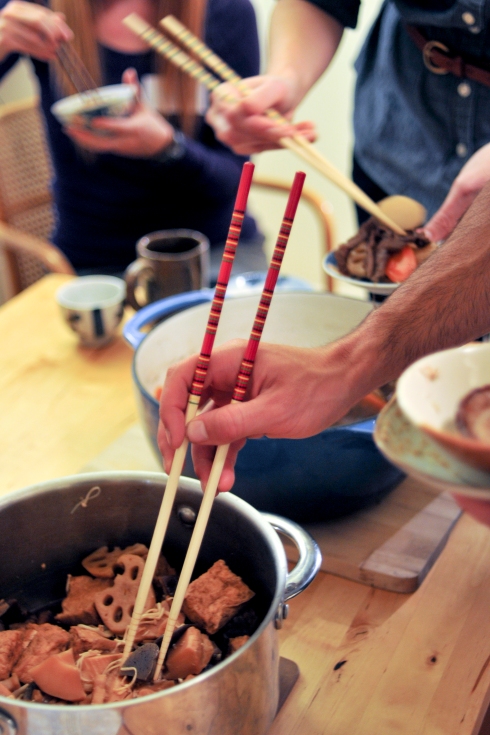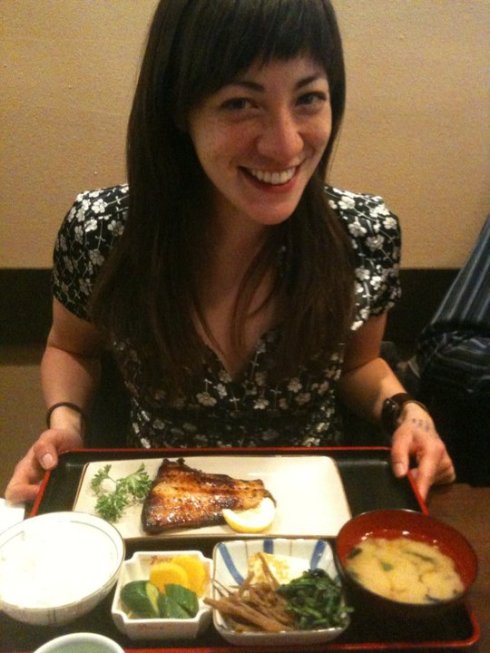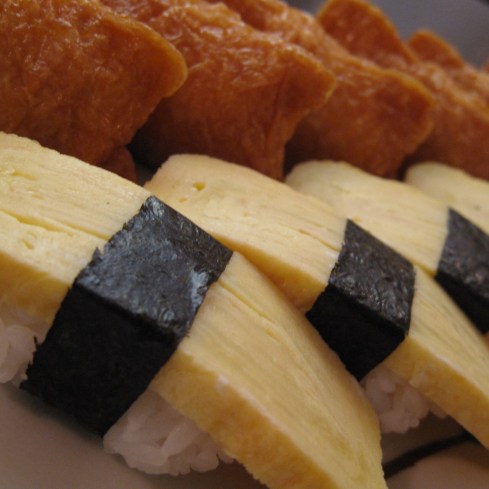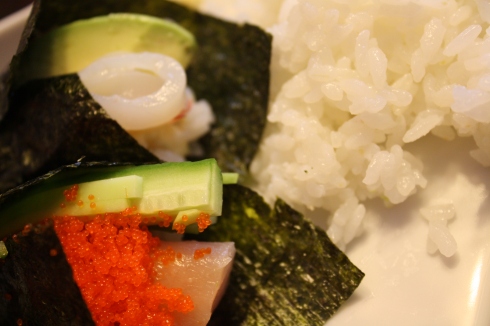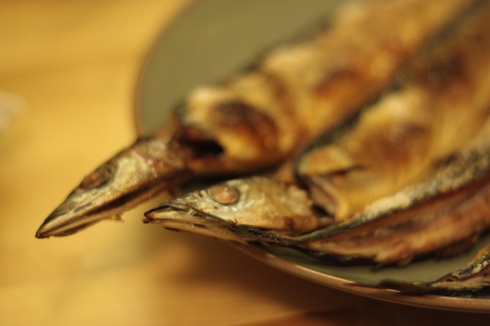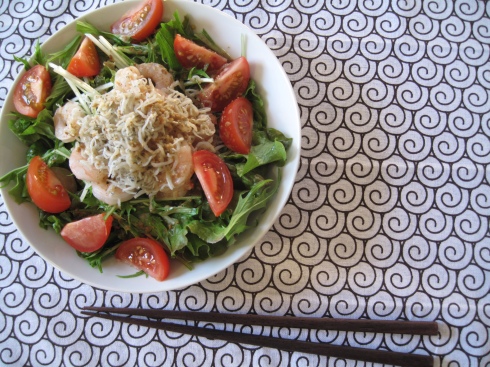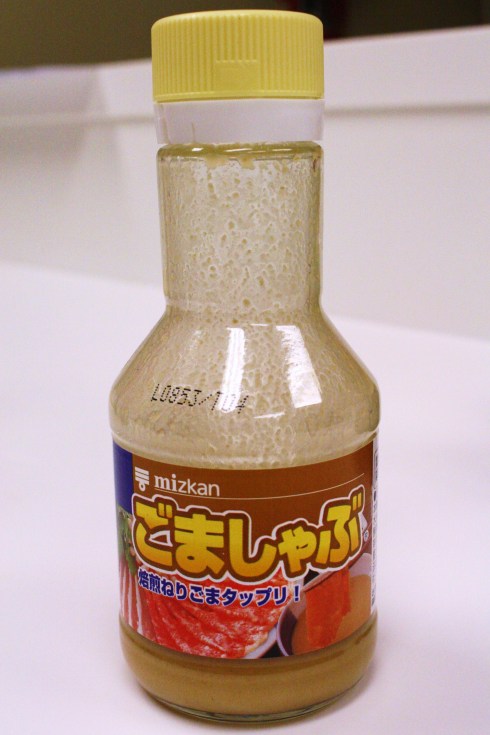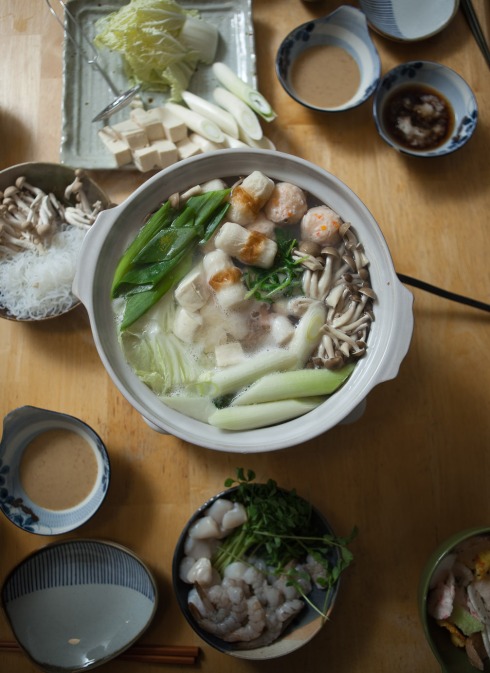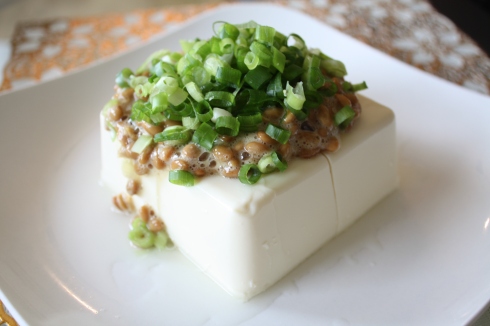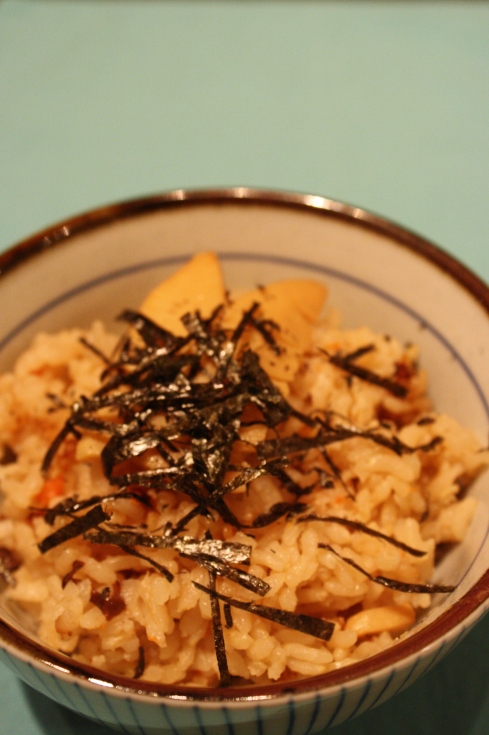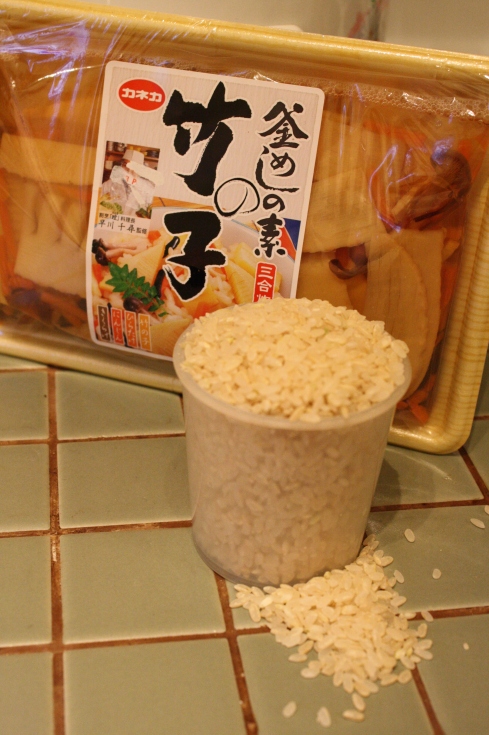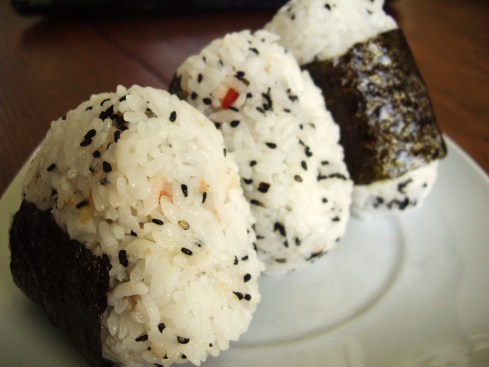Hello readers and friends! I am now at a new website – letscooking.ca – where you can find more information on Japanese ingredients, recipes, mini-recipes, and updates on my new cookbook. Please follow me at my new blog, and on my new facebook page. Let’s Cooking!
Let’s ParticipATE!
10 OctEver wanted to contribute to a cookbook? Now’s your chance. I’m writing a Japanese Home-cooking recipe book and I need your help.
The FEEDback Project is a participatory cookbook that presents a set of recipes and asks you to participATE by:
- Reading a recipe
- Trying it out
- Commenting on the experience and/or sharing a photo of the result
You can do this on your very ownsome, cooking a dish and posting online. Or, for the fun (and food) of it, gather a group of friends for a FEEDback pot-luck party, where each person cooks one of the recipes and you all share your experience with each other (and then me, via the interwebs!) It’s a great way to eat a whole bunch of Japanese dishes AND contribute to a cookbook!
My fantastic friends organized one, and I have to say, every single dish turned out great! I was really and truly expecting one or two disasters, but each person was successful in making something delicious, and I was really excited by all of the FEEDback telling me that the recipes were super easy. Here are some of the things they made (all photos thanks to Rob Shaer – rob.shaer@gmail.com).
Thanks to everyone who participated.
Inspired? ParticipATE!
Japanese Home-Cooking in Vancouver
27 FebDon’t have a Japanese parent, but want to try some Japanese-style home-cooking? If you live in Vancouver, you’re in luck. Several restaurants serve the food that the Japanese really eat every day.
Done right, a real & traditional Japanese meal is the thoughtful preparation of the freshest (read: seasonal and often local) ingredients using one of several staple cooking methods. Each meal is composed of rice, soup, and several okazu (small side dishes) for a variety of textures, flavours, colours, and aromas. Often served as a set meal, or teishoku, you can find very good quality Japanese meals at the following locations in Vancouver:
Japanese Kitchen is on Commercial between 4th and McSpadden (where Clove used to be). If you want skillfully prepared REAL Japanese food using seasonal ingredients, this is the place to go. The chef applies impeccable cooking techniques to only the freshest ingredients and artfully presents your meal used to be head chef at Tojo’s and Blue Water Cafe before this venture. Attention to detail here is amazing: tempura is served on perfectly folded paper that is served to you with the pointy side away from your body (as per tradition), the “tsuma” (thinly sliced daikon radish) that comes with the sashimi is all hand-cut and not machine-shaved, they have even made the soy sauce themselves (don’t be deceived by the Kikkoman dispensers, they are just used because their design prevents drips on your clothes!) Don’t miss this place. It’s the REAL DEAL. While regular menu items are delicious, it’s the specials menu that is the highlight.
Van-Ya on Kingsway just east of Joyce. I highly recommend going to this little mom and pop establishment. Very small place with very delicious food.
http://maps.google.ca/maps?f=q&source=s_q&gl=ca&hl=en&g=778+West+16th+Avenue%2C+Vancouver%2C+BC+V5Z+1S7&q=van-ya+restaurant&btnG=Search+Maps
Hachibei on 16th at Willow. (no reservations available) The teishoku here are a little bit more pricey than Van-ya, but probably the best I’ve had in Vancouver (so far…) The black cod is highly recommended, but everything here looks good. They also serve sushi, but if you’re going here, you should go for the unique dishes you can’t get at other restaurants in town.
http://maps.google.ca/maps/place?hl=en&um=1&ie=UTF-8&q=hachibei+vancouver&fb=1&gl=ca&hq=hachibei&hnear=vancouver&cid=7280592739258883710
Tenhachi on 12th at Spruce (no reservations available) is one I haven’t been to, but have heard amazing things about it. It’s the restaurant I’m most looking forward to visiting. However, they don’t take reservations, and I hear that you have to line up. They also serve a Japanese breakfast (similar to what we had tonight – grilled fish, rice, miso soup, etc.) which could be a fun experience if you haven’t had it before.
http://maps.google.ca/maps?f=q&source=s_q&gl=ca&hl=en&g=778+West+16th+Avenue%2C+Vancouver%2C+BC+V5Z+1S7&q=van-ya+restaurant&btnG=Search+Maps
and http://tenhachi.net/index.html
Aki on Thurlow just off of Robson is where we’ll be visiting next week, and functions more like an izakaya in the evening. However, it does serve teishoku (set meals) at lunchtime. I haven’t had their lunchtime teishoku, but am sure it will be delicious and authentic, like their evening fare.
http://maps.google.ca/maps?f=q&source=s_q&gl=ca&hl=en&g=778+West+16th+Avenue%2C+Vancouver%2C+BC+V5Z+1S7&q=van-ya+restaurant&btnG=Search+Maps
Hi Genki on Southoaks Crescent just next to Nikkei Heritage Society serves authentic Japanese food on a rotating menu. (Their menu is supplemented daily with specials, which is a sign of fresh ingredients and skill in the kitchen.) They also have a good selection of washoku (Japanese style food) and yoshoku (Japanese style western food). Affiliated with the Japanese grocery chain Fujiya, it also serves as a restaurant to the seniors home at Nikkei Place.
http://maps.google.ca/maps?f=q&source=s_q&gl=ca&hl=en&g=778+West+16th+Avenue%2C+Vancouver%2C+BC+V5Z+1S7&q=van-ya+restaurant&btnG=Search+Maps
Happy Forking!
Sushi Spots in Vancouver
17 FebI have the best job ever. I just got home from teaching the second class of the Japanese Culinary Arts class for UBC Continuing Studies, where my job is to essentially host an educational dinner party at a Japanese restaurant each week! Eat and talk about the food I love? I know, I have it so tough…
This week’s class was all about sushi, and so I followed up our delicious meal at Temaki Sushi (on West Broadway near Arbutus – don’t get mixed up with the all-you-can-eat BC Sushi nearby!), where the owner was kind enough to give us a really great deal on a fantastic meal. If you go there, ask for the aji tataki, which is served with the whole fish presented with shaved daikon radish and the slices of tataki. Then, once you’ve eaten the raw fish, the bones are taken back to the kitchen to be deep-fried for aji karaage. So tasty! Very well-priced for the quality you receive, do give it a shot if you live in the west side of town.
If you’re looking for other places, though, here are a few more:
Downtown
I must confess that my knowledge of downtown sushi joints is pretty poor. I tend to avoid evenings out in downtown, unless I’m riding there on my bike. So here are the two top places I’ve been to, but I know there are many more!
- Kaide: http://vancouverkaidesushi.com/ On Richards near Pacific, this one is hard to spot, but is a shame to miss. Fresh fish, and a chef who knows what he’s doing. It’s in a part of downtown that is a little out of the way, so it’s a great place to get away for a downtown lunch.
- Honjin: Tucked in the corner of a complex in Yaletown, Honjin has Sushi Shooters that are creative and delicious. http://www.honjinsushi.com/ They tend more to fusion sushi, but the ingredients are fresh and well prepared.
Central/East Vancouver
- Shiro: on Cambie at 15th Avenue – very authentic sushi, fresh fish, and good specials! Students in the past have recommended the House Roll, and the BC Roll. I recommend asking the chef what is fresh and exciting that day. There is often a line-up, but not usually a terrible one. No reservations. http://maps.google.ca/maps/place?hl=en&source=hp&oq=&gs_rfai=&um=1&ie=UTF-8&q=shiro+vancouver&fb=1&gl=ca&hq=shiro&hnear=vancouver&cid=5774980192787564347
- Toshi: on East 16th Avenue just west of Main street. Get there EARLY as there is always a long line (I think they open at 4:30?) Go inside and write your name on the list. If your entire party is not there at the time your name is called – you won’t be seated. It’s THAT good! I recommend the grilled squid and the grilled eggplant as well. http://maps.google.ca/maps?f=q&source=s_q&gl=ca&hl=en&g=3096+Cambie+Street%2C+Vancouver%2C+BC+V5Z+2V9&q=toshi+sushi+vancouver&btnG=Search+Maps
- Zipang: Another reasonably priced location on Main street, I recommend their non-sushi dishes, such as their grilled eggplant, which is one of the best I’ve ever had. http://www.zipangsushi.com/ They also serve takoyaki (octopus balls) and Okonomiyaki (although you’ll be able to make a better Okonomiyaki with your experience!)
Kitsilano/West Side
- Octopus’ Garden: A pricier option on Cornwall, this might be one of my new favourites. For this year’s Dine-Out Vancouver, this restaurant provided me with one of the most creative and delicious meals I’ve had in this city. http://www.octopusgarden.ca/ Definitely a place to bow to the chef’s choice and go for something special.
- Kibune: On Yew near Cornwall (just beside the Happa Izakaya) is a small and really great little sushi spot. Also not super cheap, but a more financially accessible than Octopus’ Garden, the sushi is very authentic and they also have tofu dengaku (grilled tofu with a miso paste). Delicious! http://www.kibune.com/
- Ajisai: Upstairs from London Drugs in Kerrisdale (on 42nd) Ajisai is the top pick of many a Vancouverite (and many Japanese Vancouverites) for high quality sushi. No tempura served here, they are about fresh fish and healthy choices. If you are going to go choose only one restaurant on this list, I know a lot of people who would say this should be the one. Read a review here: http://vancouverisawesome.com/2009/04/28/weekly-slop-ajisai-sushi/
South Vancouver
- Shimaya: If you want authentic at good prices, without the crazy line-ups, try this place on Victoria drive at 39th. I think it’s equal to Shiro and Toshi in terms of quality, just a little further out of the way. http://maps.google.ca/maps?f=q&source=s_q&gl=ca&hl=en&g=3096+Cambie+Street%2C+Vancouver%2C+BC+V5Z+2V9&q=toshi+sushi+vancouver&btnG=Search+Maps
Richmond
- Gyo-ou: An interesting approach to sushi – some deconstructed offerings at this new place just east of Aberdeen Centre on Sexsmith. They also have dishes like takoyaki. Check out their exciting menu: http://www.gyo-o.com/. Brought to you by the Gyoza King owners. They also own a ramen shop in the same complex that is VERY authentic – http://www.gmenramen.com/
I’ll be heading to three more restaurants for this course, so please stand by for more recommendations – and please do share your favourites, too!
Happy Forking!
South Vancouver
· Shimaya: If you want authentic at good prices, without the crazy line-ups, try this place on Victoria drive at 39th. I think it’s equal to Shiro and Toshi in terms of quality, just a little further out of the way.
Richmond
· Gyo-ou: An interesting approach to sushi – some deconstructed offerings at this new place just east of Aberdeen Centre on Sexsmith. They also have dishes like takoyaki. Check out their exciting menu: http://www.gyo-o.com/ Brought to you by the Gyoza King owners. They also own a ramen shop in the same complex that is VERY authentic – http://www.gmenramen.com/
Registration is OPEN!
11 FebWanna learn how to make this?
Learn how in my course “Japanese Home-Cooking: An Introduction“, offered through UBC’s Continuing Studies. This course is my second at UBC, and will feature a new series of recipes to build your Japanese cooking skills and impress your friends. It runs 3 Mondays (May 30, June 6 & June 13) and I’ve just heard that registration is already open.
Fall term’s course was a success, with great (and delicious) results.
Sign up now! Spaces are limited and the courses fill up quickly!
Gimme sanma that! Shioyaki Sanma
28 JanHeads of fishes is disturb for many western people
But please encourages to try sanma fish, complete body including head!
Not necessary for eating all head, but including is Japanese tradition for respect. Please try!
Want to get your Omega-3’s but are flummoxed by fish? Shioyaki (salted and grilled) is the most basic technique for preparing fish – with friggin’ tasty results. Trust me – you can do this. Sanma is called Pacific Saury in English, and is available at several Asian markets in Vancouver, including T&T and Fujiya. Fujiya even sells these fish pre-salted and ready for your oven! What could be simpler? (Or cheaper! These go for about $1.50 a piece!!)
One note – sanma is a “fishy” fish. When you are grilling it in your kitchen, it will smell like you are grilling fish in your kitchen. It is not the dish to prepare for your friend who can only barely stomach a mild white fish. But if you have an adventurous palate and enjoy mackerel and other stronger fish, then you gotta try sanma it.
Ingredients for shioyaki sanma:
- 1 whole sanma (Pacific saury), cleaned and scaled (you can usually buy it prepared this way)
- salt
- tin foil
How to make shioyaki sanma:
- Set your oven to broil (high heat from the top burner) and place the rack relatively high, so that the fish will be about 3 – 4 inches from the element or gas flame.
- Line a cookie sheet with some tin foil. (You may choose to very lightly oil the foil, but these fish are oily, and don’t really require it.)
- Wipe off any excess moisture from the skin of the fish with a paper towel, lay it on the tin foil, and sprinkle liberally with salt. You want to create a bit of a salty crust. (Wiping off the moisture helps to create a crispy skin.)
- Stick the fish under the broiler for about 5 minutes, until fully cooked through. This time will vary with the size of the fish, the heat of your broiler, and the distance from the broiling element, so use your good judgement. You want the fish to be fully cooked through, so don’t hesitate to take it out and open it up to see how it looks in the middle.
Enjoy it with a bowl of rice with the skin on. (The salt will create a lovely crispiness.) A little bit of grated daikon radish served on the side and eaten in small dollops along with the fish will also cut the oiliness, and add some lovely texture and balance of coolness to the heat of the grilled fish.
Let’s enjoy forking with fish!
Open, Sesame! Sesame Sauce Secrets
18 DecFor matching traditional taste and foreigner’s enjoy of Japanese foods,
can use sesame easily in the dressing.
Creamy nuts taste is liked by everyone.
I’m often asked my advice on products and brands by those who want to cook more Japanese foods, but just aren’t sure what to do when they enter their local Asian supermarket. “What’s the big deal?” I thought, “all you have to do is read the labels”. After a recent trip, however, I realized how often those labels were written only in Japanese! So here goes my first attempt at introducing you to one multi-purpose (and uber-delicious) Japanese-only labelled product: Goma-shabu, a sesame dip.
As you may know, the insanely popular salad, spinach goma-ae translates literally to “spinach dressed with sesame”, but you can make anything goma-ae with the addition of some sesame sauce. I don’t know how or why it happened, but North American sushi shops abandoned the traditional soy-sauce based dressing (easily made with soy sauce, sesame seeds, and sugar) for a richer, creamy-style sesame dressing (warning to those with allergies – I highly suspect many of them use a peanut-based sauce). And despite my disdain for this inauthentic topping for spinach gomaae (it isn’t the real deal! Don’t be fooled into thinking the Japanese eat anything like it at home) I must admit that a creamy sesame sauce is damned delicious. The closest pre-bottled dressing I can find for those who want to recreate their favourite restaurant treat at home is Goma-shabu. It’s not only tasty, but also versatile.
So here is the bottle:
And here is how to use it:
- use it straight up as a salad dressing on a green salad, tofu salad, or noodle salad
- mix in a few tablespoons with a can of tuna for a twist on tuna salad
- on a tuna sashimi & avocado donburi – arrange sliced sashimi and avos on a hot bed of rice, pour on a little dressing and top with crushed sesame seeds to garnish
- stir it into a bowl of grilled or BBQ-ed vegetables like eggplant, zucchini squash and pumpkin
- use it for its original purpose, as a dip for hotpot. It’s specifically meant for beef shabu-shabu, but I use it for veggie and seafood hotpots as well
Really, anything I put it on tastes better. Shake it well, as it separates, and try it on anything else you fancy.
Happy forking!
Tofu true love: Hiyayakko
8 DecLove of pure heart of tofu exist by name, Hiyayakko.
Best dishes for preparation by person like a topping in many variety
and pure taste of the real tofu.
People are suspicious of tofu. And if they live outside of Asia, I don’t blame them. There is one thing that really bothers me about tofu in North America. It’s gross. I mean, I’ll eat it, and maybe even enjoy it… but I don’t consider it tofu. Here, soy bean curd is used as a meat substitute, whereas in Japan, tofu – soft, smooth, and rich with a mellow bean flavour – is enjoyed for it’s texture and delicate qualities. It’s eaten boiled, simmered, grilled, fried, as a drink and as a dessert custard. There are multiple course meals based around tofu and all its glory. It’s delicious. And if you really like tofu? You get raw, and top it.
Ingredients for Hiyayakko (per serving)
- Chilled soft (silken) tofu. For this dish, it’s worth going to the Asian market for the real deal. If you can’t find soft tofu, do not substitute this with medium or firm tofu. Simply abort the mission until you find the good stuff.
- Garnish of choice (see below for some suggestions)
- Soy sauce or ponzu sauce (available at Japanese markets and many grocery stores)
How to make Hiyayakko:
- Carefully slide a single serving size of tofu onto a small side plate (first drain the water out of the package and cut the typical “square” of tofu into roughly 4 equal servings). If you’d like, cut a grid into each serving, resulting in 4 or 6 bite-sized cubes.
- Top with your favourite garnish (see “Variations” section below)
- Pour on a little soy sauce or ponzu sauce to taste, adding wasabi paste if you like the kick.
- To eat, roll each cube in the sauce and enjoy with a little pile of the topping. YUM!
Variations for Hiyayakko toppings:
Katsuo-bushi (shaved bonito) and green onion
- Sprinkle some katsuo-bushi on the tofu, and top with a little finely sliced green onion.
- Serve with soy sauce and wasabi, if you like
Natto and green onion (pictured above)
- Vigorously stir purchased natto (fermented soy beans – very stinky!) and pour over tofu.
- Top with thinly sliced green onion.
Umeboshi and shiso with ponzu sauce (pictured below)
- Finely slice shiso herb and place on tofu
- Pit a couple of umeboshi and chop finely, until it becomes a paste. Place a dollop on top of the shiso nest, or place on the side to mix in with the ponzu (as you would wasabi in soy sauce)
- Pour over a little ponzu, for dipping, to create a citrusy, fresh dish
Katsuo-bushi (shaved bonito) and white onion
- Slice fresh white onion into paper thin slices, and soak in ice-cold water for at least 30 minutes (better to do this for an hour or more). Change the water a few times for best effect.
- Drain and spin or pat onions dry, and make a beautiful pile on top of the tofu.
- Sprinkle liberally with katsuo-bushi flakes
- Serve with soy sauce
Happy forking!
Heat me up, Scotty: Takikomi Rice
14 NovIt’s now a cold season. May I make a suggestion?
Boil the rice inside with soy sauce and goods for keeping body comfortable temperature.
Warm of rice for body is clever technique on such a cool day.
Rice cookers rock. Not only do they cook perfect rice every time, they also give you the freedom to make dishes like takikomi gohan. At the danger of sounding like an infomercial, I have to say that it’s SO EASY to make. Just to throw in some veggies (and possibly meat) and seasoning in with your rice, press “cook” and wait for deliciousness. The best part is, these make great onigiri (rice balls) for tomorrow’s lunch.
There are two ways to make it:
- The easy way.
- The REALLY easy way.
How to make takikomi rice “The easy way”:
- Wash and rinse 2 cups of plain, Japanese rice. Drain. Put into your rice cooker and fill to the “2” line with fresh water.
- Drop in some sliced mushrooms (shiitake, shimeji, enoki, matsutake, button, etc.) cubed carrots, sliced bamboo shoots (takenoko), strips of inari (deep fried tofu sheets), bite-sized pieces of raw chicken or thin slices of pork, half a can of tuna, or whatever other fillings you like or have in your kitchen.
- Season with 1 Tbsp sake, 3/4 tsp salt, 2 tsp soy sauce, 2 tsp mirin (or 1 tsp sugar).
- Press “cook”. Enjoy. Serve with a sprinkle of some crumbled or sliced nori (dried seaweed) or sesame seeds on top for garnish.
How to make takikomi gohan the REALLY easy way:
- Wash and rinse 2 cups of plain, Japanese rice. Drain. Put into your rice cooker and fill to the “2” line with fresh water.
- Add a pre-packed bag of fillings and bag of seasoning (available at Fujiya) and press “cook”. Enjoy.
Rice Balls! Making Onigiri with Shinmai
2 NovBalls of good firmness with some of salt taste
Remind me the traditional times grains
Using time of new rice to eat fresh balls is enjoyment of fall season
It’s the season of shinmai (new rice) and when rice is this fresh and delicious, the best way to eat it is the simplest way. Plain. With a little salt and wrapped in a piece of nori (seaweed). The amazing blog Just Hungry featured this article in the Japan Times, which gives a run-down on shinmai as well as a recipe for the delectable onigiri (rice ball). (For more on balls, click here for two of my fave.)
Happy forking with balls!
